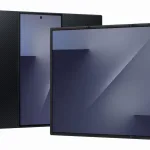
India is known to be a price sensitive market and though we’ve got Rs. 50,000 devices from Samsung, LG, HTC, Sony, entry-level and mid-range market is a totally different ball game. The success here, depends on how well the features are packed and most importantly, at what price? Motorola tasted success in the segment with the Moto G and Moto E but can China-based Xiaomi replicate the success? Let’s find out.
Xiaomi (pronounced as Shaa-o-me) was established in 2010 in China and the company has been growing exponentially ever since. One of the major factors that contributed to the company’s success was best quality hardware at minimum price, which is why the company has been selling devices faster than they can produce.

If it’s not evident from the images yet, we’ll go on record and say it – Xiaomi Mi 3 is a good looking device. Xiaomi claims the 8.1mm thin Mi 3 features a magnesium alloy frame coated with three layers of thermal graphite film, laser cut speaker grills at the bottom and metal-reinforced USB port. In simple words, Xiaomi has designed the Mi 3 to be durable yet elegant looking. Making things more interesting is the plastic body that has been given a metallic finish to give a premium look.


The front is covered with the display along with three capacitive buttons beneath it and a 2 megapixel front-facing camera above that. As for the other button and port placements, the power and volume buttons are located on the right side of the handset while the 3.5mm headphone jack and SIM card slot make up the top part. Speaking of SIM card slot, one of the most interesting things is that the Mi 3 uses a regular size SIM card and if you’re using a microSIM or a nanoSIM, you’ll have to use an adapter along with it. The 13 megapixel camera and dual LED flash are located at the back.


Overall, we feel Mi 3 is one of the best looking handsets in its price range.

The display on the Xiaomi Mi 3 is a 5-inch one that supports a Full HD 1080p resolution. The IPS panel offers some good display quality with improved colours, viewing angle and crisp text, thanks to the high 441ppi.

Hugo Barra – ex-Googler who joined Xiaomi nine months ago, during our brief interaction claimed the hardware on Xiaomi phones are just a mean to enable the software. The software in this case is MIUI and associated services. Unlike skin overlays like TouchWiz on Samsung devices or Sense UI on HTC, MIUI is a forked operating system that is based on Android OS. In the case of Mi 3, the phone runs MIUI v5 which is based on Android 4.4.2 KitKat.

As with other Chinese companies like Gionee, Lenovo and Oppo, the MIUI on the Mi 3 does not separate the home screen from the app drawer. Being a custom ROM that can be installed in non-Mi phones, MIUI v5 gives a lot of customisation options. The lock screen allows users can quickly go into camera, messages, call logs or simply unlock the device. A tap on the circle previews the body of an incoming SMS or activate a torch by long pressing the Home button.

The task manager sports app icons instead of thumbnails that is found on the normal Android. Apps can be killed instantly with an upward swipe or can use the one tap task killer that resides beneath it. One interesting thing is swiping down the app will lock the app which won’t allow the task killer to kill the app.

One of the biggest differentiators according to Xiaomi is the Theme store that is pre-installed on the Mi 3. The store features variety of visually appealing apps and though they’re free at the moment, Xiaomi plans to introduced paid themes in the near future.

The notification panel has also got a facelift and offers quite a few customisation options if you delve further. For instance, the battery icon can be replaced with a coloured bar at the top; change the operator name; and even show the transfer speed during an active data connection.

The Mi 3 also comes with Mi Cloud that backs up contacts, messages, images and other settings and Mi Talk, which is Xiaomi’s iteration of a messaging app.
All said and done, MIUI v5 is very much usable. Sure, there are some quirks like you’ll find some Chinese text even when you’re using English language but Xiaomi assures they are working round the clock to push out new improvements and iron out bugs.
The Mi 3 is powered by Qualcomm’s Snapdragon 800 quad-core 2.3GHz processor, 2GB RAM and as you’d expect, the phone packs a punch. The phone is fast and handles graphic intensive tasks like gaming with ease. Real world usage will vary but here are some screen shots of synthetic benchmarks that show the device’s prowess.


Call performance on the Mi 3 is good. We didn’t face any particular issue of call drops except a few when we had spotty 3G coverage. One of the things that we appreciate is the ability to record calls directly from the call menu. A single tap and it starts recording a call without having the user to install any third party app.
The loudspeaker output is decent as well. It’s not overtly loud and is audible in a small room.

Mi 3 has a 13 megapixel camera at the back that includes a 5-piece lens with an infrared filter and f2.2 aperture support. While the Mi 3 camera has a bit to catch up with expensive flagship devices from its competitors, the camera is certainly one of the best in the price range. The camera interface boasts a simple and an advanced mode and offers HDR mode, Skin tone, Panorama and variety of filters. Advanced mode allows users to adjust their focus, exposure and white balance.
As for video recording, the Mi 3 supports Full HD 1080p video recording along with video stabiliser.
 |
| Xiaomi Mi 3 Sample Shots |
A 3050mAh battery powers the Xiaomi Mi 3 that lasts more than 1.5 days with casual usage. Users can even select from three power modes – High Performance, Balance and Power Saving.
One of the things that makes Xiaomi Mi 3 tempting is the price tag. It’s priced at Rs. 13,999 and given the hardware and performance, the phone blows Moto G and other similarly priced devices out of the water. That said, the biggest bane of Mi 3 is the limited internal storage. There’s no microSD expansion slot and while Mi 3 has a larger capacity version internationally, Xiaomi will sell the 16GB variant only in India (for now). However, if you can make do with the limited storage, the Mi 3 is an excellent buy at the price.
PS: After sales service is an important factor while purchasing the device and it seems Xiaomi has addressed it with over 30 service centers across the country with many more on the way.





Leave a Reply